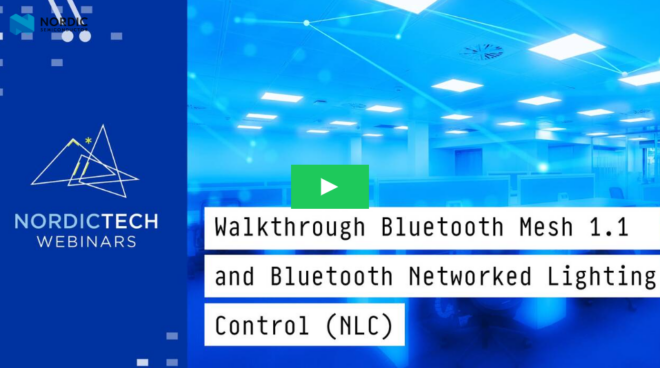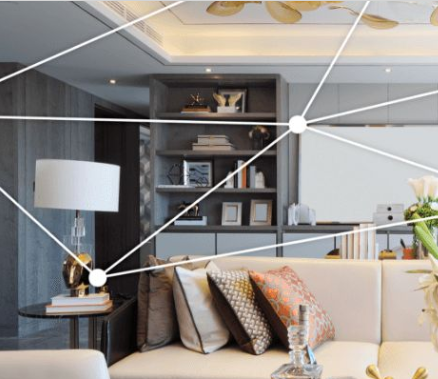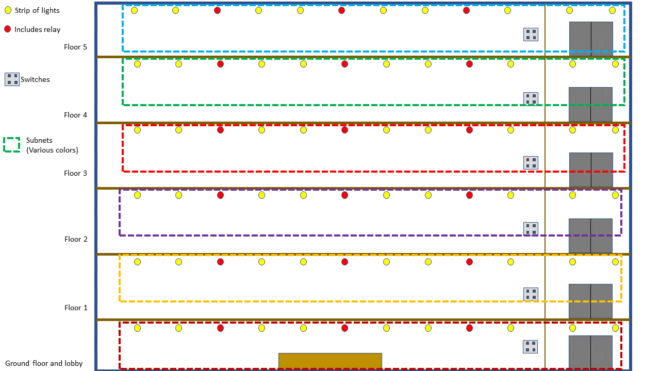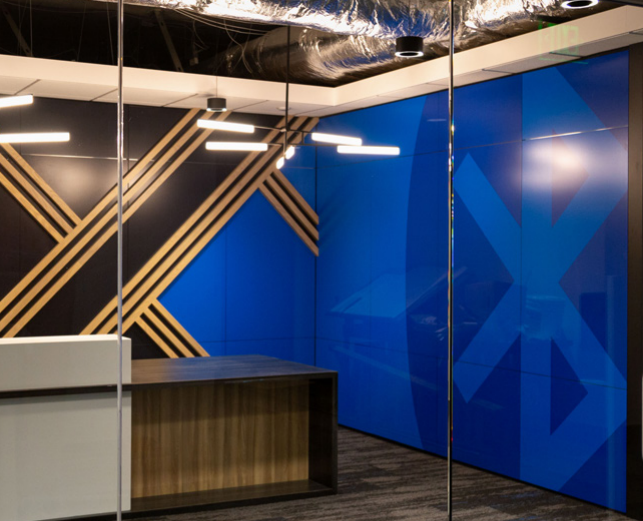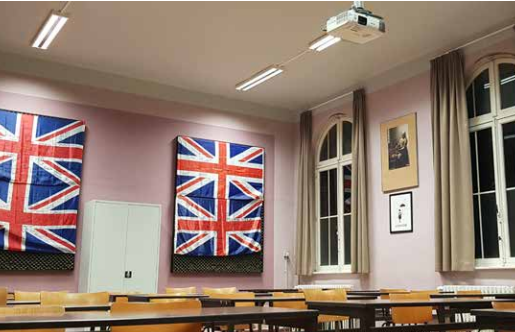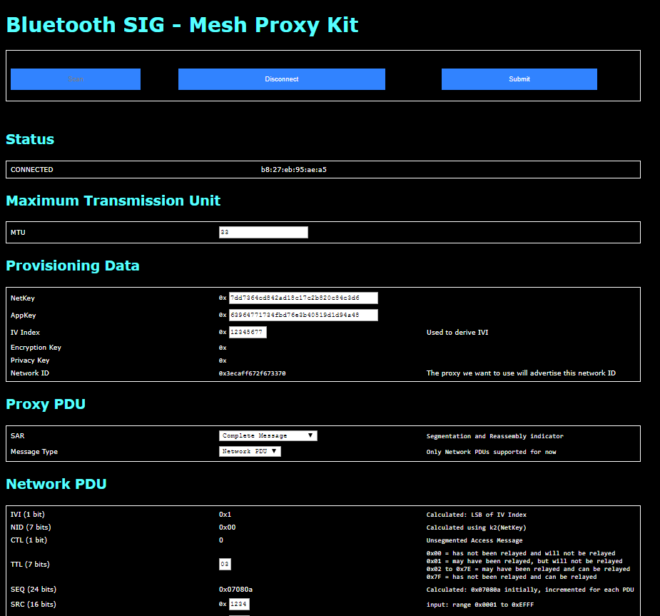As the preferred technology in the IoT, Bluetooth® technology enables a wide range of innovative use cases, from the smart home and smart city to the digital key and networked lighting control. According to the 2021 Bluetooth Market Update, Bluetooth smart home automation device shipments will reach 222 million in 2021, while annual Bluetooth residential smart lighting shipments will reach 39 million. Analysts predict annual Bluetooth smart home automation device shipments will triple by 2025, increasing to 670 million in just five years. Major devices driving forecasts for Bluetooth Device Networks include smart home automation controllers, smart lighting, and smart appliances.
As the only wireless standard leveraging a decentralized control architecture to help ensure no single points of failure, Bluetooth Mesh is ideally suited for control, monitoring, and automating systems where hundreds or thousands of devices need to communicate with one another. Today, Bluetooth Mesh enables smart home and networked lighting control systems from many leading vendors. For years, Espressif has been deeply involved in R&D and design of AIoT hardware and software products. ESP-BLE-MESH, a Bluetooth Mesh protocol stack developed by Espressif, is used across smart home, smart lighting, and smart industry environments.
Recently, I had the opportunity to speak with Teo Swee Ann, the founder and CEO of Espressif, gaining a deeper insight into the use cases of Espressif’s open-source Bluetooth Mesh protocol stack and the future of this technology.

Q&A with Teo Swee Ann from Espressif
What are the main applications of Espressif’s Bluetooth Mesh solution?
The Espressif Bluetooth Mesh solution is an open-source protocol stack based on Zephyr Bluetooth® Mesh. It supports almost all core features, client modes, and server modes, as specified in the Bluetooth Mesh protocol. In short, it is a full-featured and open-source Bluetooth Mesh protocol stack. Devices built with this solution can interoperate with different types of standard Bluetooth Mesh devices from different manufacturers. Our engineers have also come up with many technological innovations pertaining to Bluetooth Mesh based on actual use cases for our users. For instance, in 2019, Espressif released an innovative feature for Bluetooth Mesh provisioning, Fast Provisioning Model, which can provision 100 nodes in 50 seconds.
Espressif’s Bluetooth Mesh solution has been deployed in smart home, smart lighting, and smart industry market segments. Users can build a secure and reliable communication network and realize functions such as device networking, automatic control, and remote monitoring. Espressif provides SoCs (such as ESP32 series, ESP32-S series, ESP32-C series, and ESP32-H series) with integrated Wi-Fi or IEEE 802.15.4 and Bluetooth Mesh protocols. Our solutions are also used for implementing Wi-Fi to Bluetooth Mesh gateways for the aforementioned market segments.
Why did Espressif build a solution based on Bluetooth Mesh networking?
Thanks to its adoption in smartphones, gateways, and endpoints, Bluetooth® technology is one of the most ubiquitous wireless communication protocols. Its ability to work in a congested 2.4 GHz frequency band through adaptive frequency hopping (AFH), secure design, and a high degree of interoperability has made Bluetooth Mesh a robust, safe, and important local-area-network protocol. Also, the design of the Bluetooth Mesh protocol can easily be extended to existing Bluetooth devices through OTA (over-the-air) upgrades if hardware resources allow.
In addition, the Bluetooth Special Interest Group (SIG) established a detailed core profile, model profile, and test suite for the Bluetooth Mesh protocol, covering common use cases and device types while ensuring the protocol’s extensibility.
Since Bluetooth Mesh is defined on top of the existing Bluetooth specification, it can easily be supported on current hardware platforms using the Bluetooth radio. Espressif’s Bluetooth Mesh implementation is memory optimized and supported on all Espressif SoCs that use Bluetooth technology. Thus, Bluetooth Mesh protocol allows us to offer a stable networking option to our customers at no additional cost.
![]()
FEATURED CASE STUDY
The Largest Bluetooth® Mesh Lighting Control Installation in the World!
17 floors of the office building with 3,685 Bluetooth Mesh lighting components. (Components can include all nodes, e.g. switches, luminaires, etc.).
Can you list a few use cases, especially in the field of smart lighting?
The most common use case for our Bluetooth® Mesh solution in the smart lighting market is connecting the lighting equipment using the Bluetooth Mesh topology. This can be implemented effectively in home, enterprise, industrial, or public environments. Our Bluetooth Mesh solution reduces the complexity of deploying and managing the networking infrastructure. For example, in a smart home scenario, Bluetooth Mesh can effectively provide connectivity to devices in Wi-Fi blind spots. Bluetooth Mesh networks deployed in smart homes feature such network properties as self-forming, self-healing, and fault tolerant.
Bluetooth Mesh -based deployments typically use a gateway to connect the participating devices to the internet. Since Espressif provides SoCs with Wi-Fi or IEEE 802.15.4 and Bluetooth connectivity, as well as with the co-existence of the above protocols, our customers can implement these gateway devices using our Bluetooth Mesh solution. For example, we helped our customers integrate Bluetooth Mesh into smart speakers which can then act as a gateway. Based on the co-existence of Wi-Fi and Bluetooth technology, our customers are subsequently able to use only one, highly-integrated chip to control other nearby Bluetooth Mesh devices while maintaining Wi-Fi connectivity and using classic Bluetooth connections to stream music at the same time.

What role will Bluetooth Mesh play in the future of smart lighting?
Based on current market data, we anticipate an increase in the penetration of Bluetooth® Mesh in the smart lighting market. For example, combining Bluetooth AoA/AoD technology with Bluetooth Mesh will enable indoor positioning through lighting networks that will facilitate various consumer and business-oriented use cases, such as asset tracking. With the ability of Bluetooth Mesh to provide device-to-device communication and connect to the internet via a gateway, more smart lighting systems will be developed.
What additional applications do you see Bluetooth Mesh supporting in the future?
In addition to indoor positioning, the application of Bluetooth® Mesh in the IoT field will increase. Through the combination of Bluetooth Mesh , voice-and-image recognition, smart home sensors, and machine learning, technology will adapt to human needs even better, improving the quality of everyday life even further.
As an ever-increasing number of smartphones provide full support for Bluetooth Mesh , further interaction between mobile phones and Bluetooth Mesh products will be achieved. We are also optimistic about the potential of Bluetooth Mesh to support IP protocols in the future. In doing so, users can use their mobile phones to control connected devices locally or use an IP-based Bluetooth Mesh network to control connected devices remotely, all without a gateway.
The combination of Bluetooth LE Audio and Bluetooth Mesh in the future may also lead to advanced applications, such as the support of voice and audio applications over the mesh network. Of course, such an application would require further development of the Bluetooth Mesh protocol.





![shutterstock 1653733096[1]](https://www.bluetooth.com/wp-content/uploads/2024/03/shutterstock_16537330961-660x372.jpg)
![Periodic Advertising with Responses[1]](https://www.bluetooth.com/wp-content/uploads/2024/02/Periodic-Advertising-with-Responses1-660x345.png)



